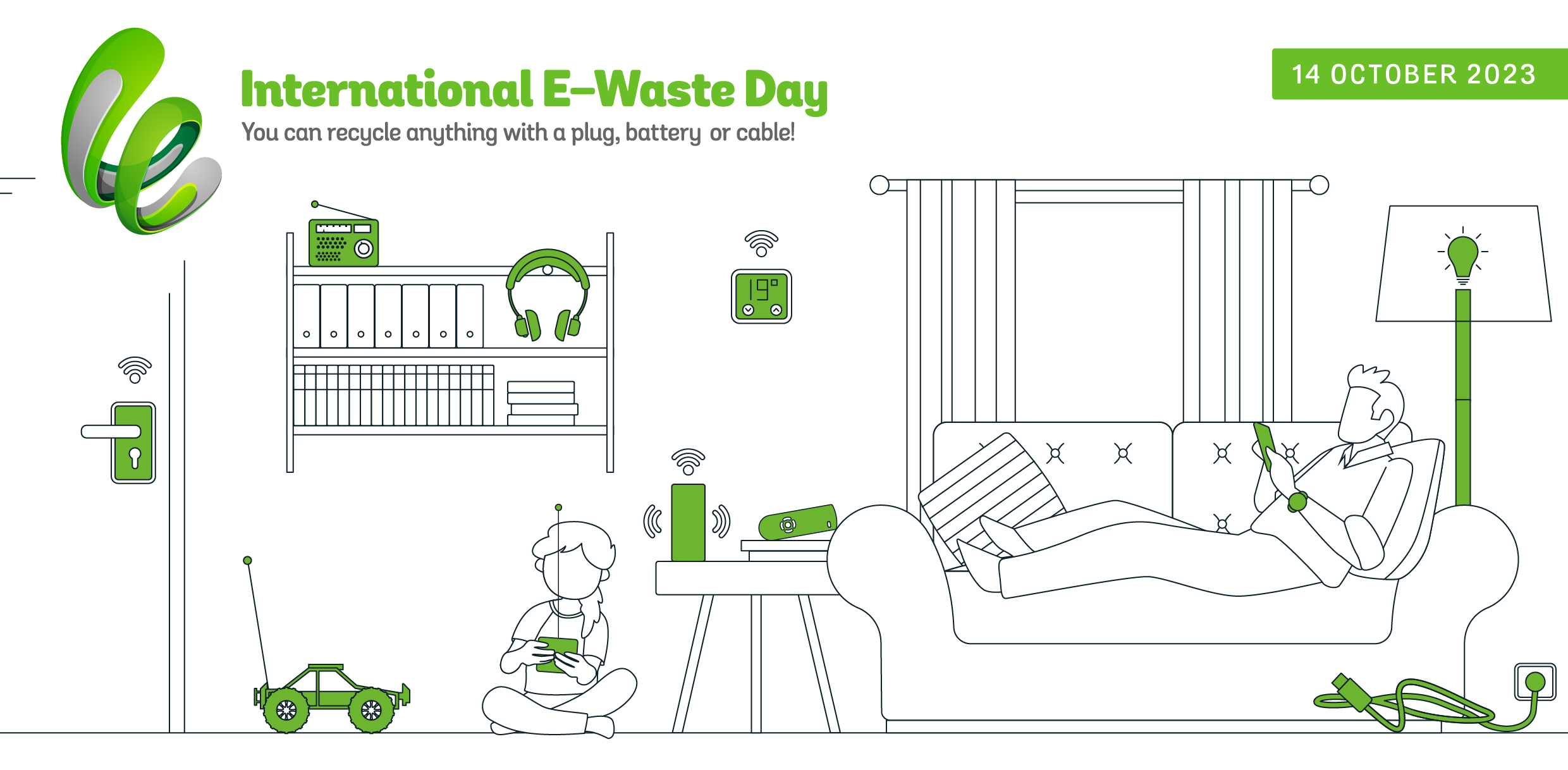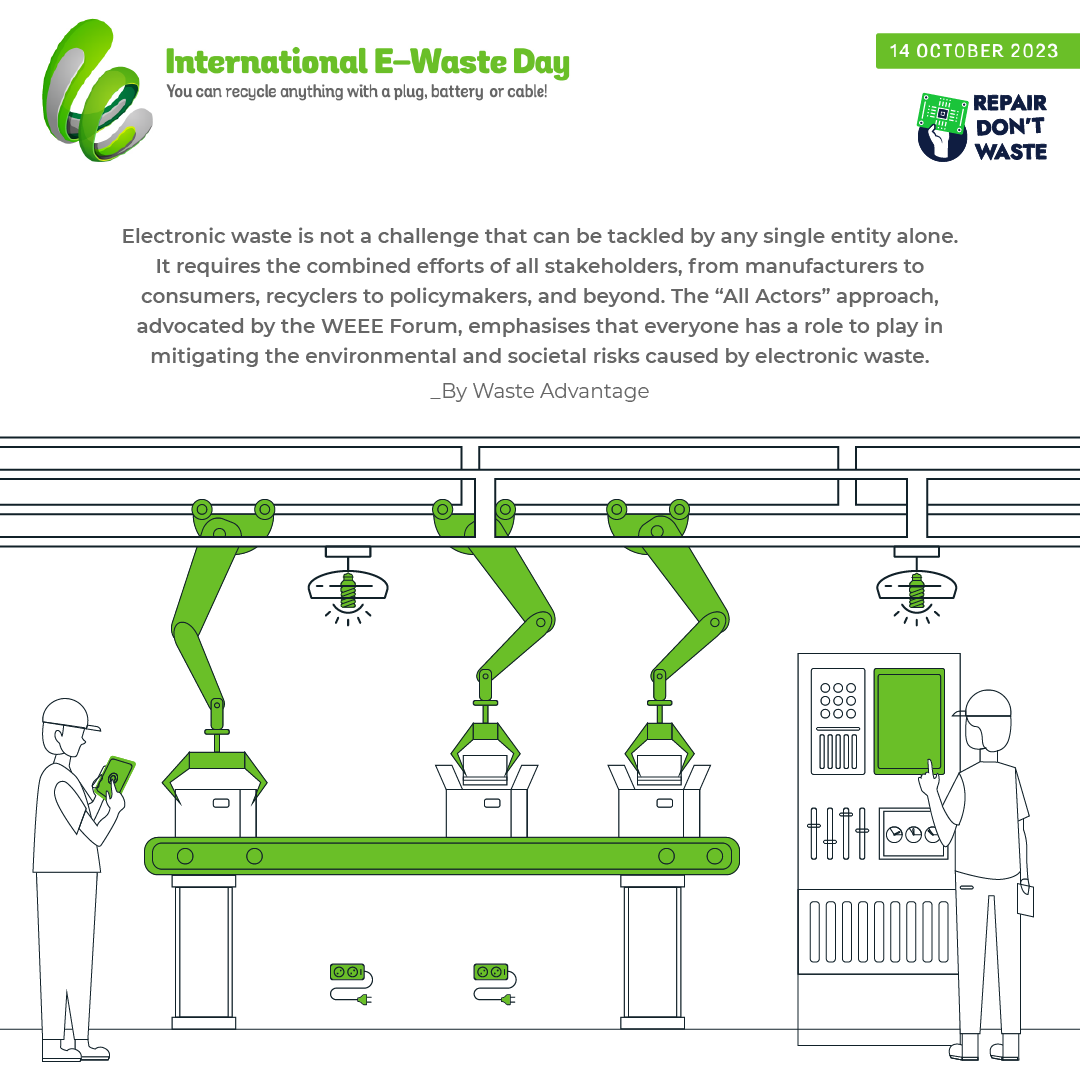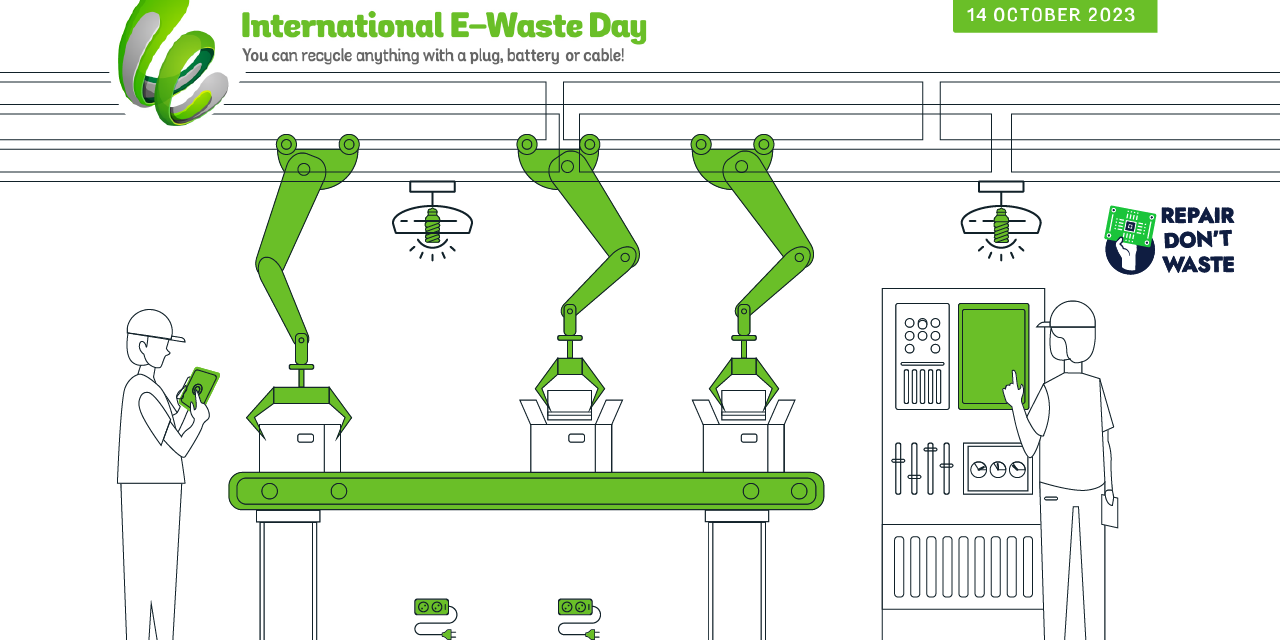Invisible E-Waste and the impact of Repair
This year’s International E-Waste Day is centred around shedding light on ‘invisible’ electronic waste owned by the world’s consumers. Electronic items permeate every corner of our living environments in the western world – from homes, to offices, to shops and community centres, you can find multiple electronics in every modern-day situation. E-Waste Day focuses on what happens to these items when they are no longer working or become obsolete in our lives. At #RepairDontWaste we ask – what happens to industrial electronics when they too have served their purpose?

IEWD 2023 press release image
Most people have a drawer in their home that is filled with old and broken electronics ranging from mobile phones and cameras and their charging cables, to used printer cartridges and electronic toothbrushes. This waste is usually thrown in general rubbish and eventually transported to landfill. WEEE Forum are educating and encouraging consumers in the lead up to 14th October to reuse and recycle these items to mitigate the amount of global E-waste that ends up in landfills – the world currently produces 50 million tonnes of E-waste per year, with only 20% being properly recycled. We can liken this ‘drawer of E-waste’ in households to the storage units and warehouses of global businesses which house the obsolete and broken machinery of days gone by – graveyards full of E-waste which sit until they are eventually transported to landfill at worse or recycled at best.
Recycling E-waste is a solution that is too easily turned to – those who believe in the building of a circular economy know that recycling serves a purpose only when all other avenues have been exhausted. To immediately recycle E-waste before repair or refurbishment have been attempted is failing to adhere to a truly sustainable model of electronic waste management. Recycling creates emissions that are not necessary – the process of troubleshooting and repairing a PCB creates a fraction of the emissions (and takes a fraction of the time) required to process a PCB into raw materials to be reused. Alongside this, recycling broken electronics creates a requirement for a new product to be manufactured as its replacement. Repairing electronics, whether consumer or industrial, immediately ensures a reduction of manufacturing emissions thanks to the elimination of needing a replacement item.

Repair, Don’t Waste offers organisations a solution to E-waste that does not encompass the limitations that are found in recycling. Our repair-first approach guarantees reduced emissions, machine downtime, and overall costs – and is the first natural step to take when considering a circular approach to E-waste. Repair, Don’t Waste members find that their electronic waste is best managed when done so directly, which is why we champion the formation of in-house repair labs so that our customers may take complete stewardship of their contribution to global E-waste. We encourage companies in all industries to do the same – it is more crucial than ever to meet ESG goals and by adopting a repair-first approach to industrial electronics, our members have found an essential way to directly mitigate their environmental impact.
The celebration of International E-Waste Day is crucial in raising awareness about hidden E-waste and the unknown resources harboured in our homes and warehouses. However, recycling is not the only way in which to access these resources – repair is crucial to increasing the longevity of electronics and reducing the need for further consumption. We hope that the future celebrations of this important day will encompass awareness around industrial E-waste and the huge benefits that repairing electronics can bring to creating a more circular economy.



